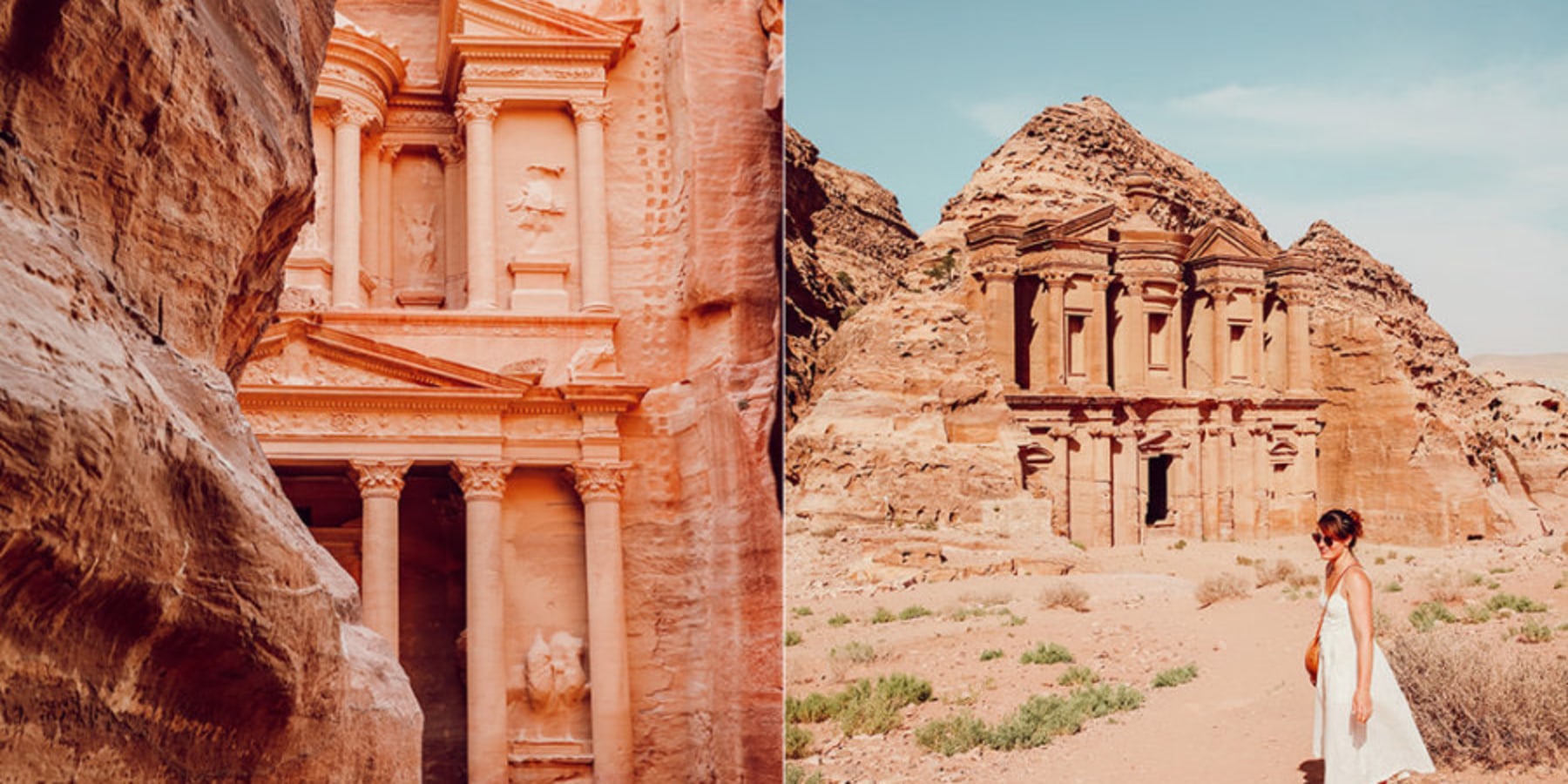
There's much to see here. So, take your time, look around, and learn all there is to know about us. We do the planning for your travel service in Jordan & Jerusalem.
Amman: The fabled seven hills of Amman have given way to about twenty, and the magic of the city has grown as well. It is one of the oldest continually inhabited cities in the world and has seen most of the many civilizations that have come through the area.
Jerash: Jerash is one of the best-preserved Roman-era cities in the world. Located only 40 kilometres north of Amman, visitors today can trace the chariot ruts on the Cardo, admire the mosaics which were laid contemporaneously to those found in Madaba, and test the acoustics of the North and South Theaters.
Desert Castles: The eastern desert of Jordan is a bleak, forbidding place, filled with basalt, sand, and sky. During Roman times, Septimius Severus and Diocletian built a network of forts here, called the limes arabicus, to protect the eastern border of their new province. While many fell into disrepair, some were later restored by the Umayyads and added to, to create their own settlements in the desert.
Petra: Petra was chosen in 2007 as one of the "New Seven Wonders of the World" not just for the beauty of its rose-coloured sandstone, or for its setting in the midst of about 100 ruggedly dramatic square kilometres of Wadi Araba, but because this area is a living museum of 10,000 years of human history.
Wadi Rum: T.E. Lawrence, the legendary Lawrence of Arabia, came here many times, both in his pursuit of success during the Great Arab Revolt of 1917-1918, but also because he found solace in the isolation of Wadi Rum. Rum still rewards visitors today with peace and unceasing beauty. The magnificence of Rum lies primarily in its amazing geology even one that looks like a giant face in profile. The springs that appear throughout Wadi Rum were created when ancient rainfall permeated the sandstone, was stopped by the granite and found tiny fissures to form pools.
Aqaba: The seaside town of Aqaba is located on the Red Sea, within sight of Saudi Arabia and Egypt. Jordan may have only 26 kilometres of coastline, but they are being put to good use, and below the sparkling Red Sea waters are some of the most fantastic dive sites in the world. This area has been of strategic interest since old times, and evidence of these civilizations is still visible, although visitors may have to tear themselves away from the five-star hotels and the beach in order to do so. Aqaba is also popular as a base camp for travellers wanting to see Wadi Rum and Petra.
Dead Sea: Located in the Jordan Valley, the Dead Sea is the remains of a giant inland lake. Lake Lisan was 200 kilometres long and approximately 200 meters deeper than the current level of the Dead Sea. As it contracted, it left Lake Tiberias and the Dead Sea, which at 405 meters below sea level is the lowest point on earth.
Bethany: The third most holy site for Christians in the world, after the Church of the Holy Sepulcher and the Church of the Nativity, is the site of the baptism of Jesus Christ, known in Arabic as Al-Maghtas. Excavations at Wadi Kharrar carried out after the 1994 peace treaty found evidence of a complex of churches, hermit cells and other buildings described in the writings of many pilgrims who have visited the site since the 2nd century AD. Now preserved as a tourist destination, Al-Maghtas attracts tourists year-round.

